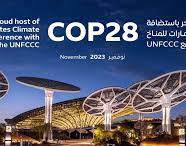International climate negotiators are divided over key elements of a United Nations fund they’re creating to distribute financial resources from richer nations to low-income countries impacted by climate change.
With eight months left before the COP28 climate summit in Dubai, two dozen delegates from a range of countries are scrambling to lay out rules for the “loss and damage” fund adopted at COP27 in Egypt last year, that summit’s biggest accomplishment.
They have just three scheduled meetings before COP28, the first of which is next week in Egypt, to agree on essential details of how the fund may be accessed and where the money will come from. As talks begin, negotiators say they face steep odds of getting cash flowing soon.
“As much as the loss and damage fund was a breakthrough, it felt like an empty wallet”, Sara Jane Ahmed, advisor to a group of finance ministers from 20 countries highly vulnerable to climate change, said.
Low-income countries, especially island nations, have been pushing for a loss and damage fund for years, on the theory that the high-emissions countries that have driven the climate crisis should bear more financial responsibility for the unavoidable climate impacts that are already happening worldwide and which poorer states are particularly vulnerable to.
During COP27, delegates from the U.S. and EU were reluctant to agree to a loss and damage fund without a more detailed plan for how it would be capitalized, for fear of being stuck with the whole bill, and who would receive payouts. They eventually agreed once language was added mandating the fund seek “new and additional resources” beyond the traditional pool of climate finance.
But they may push again now to narrow the pool of possible recipients to only the poorest countries — which would exclude most island nations — and to set a strict definition of “loss and damage” that could entangle future claims in red tape. The overall effect would be to limit the fund so that it can be covered by existing aid budgets, said Alpha Kaloga, a leading negotiator for the Africa Group, when in fact much more financing is needed. Total global aid spending is about $180 billion per year, while climate-related loss and damage is projected to exceed $500 billion annually by 2030 in developing countries alone.
Instead, he said, negotiations should start from the other end of the funnel, with a wide-ranging assessment of unconventional funding streams that could be tapped straightaway. That could include sovereign debt cancellation, new taxes on fossil fuels, government-backed insurance networks, or reforming risk standards at multilateral development banks to encourage lending. If countries can agree to put all these on the table for loss and damage, he said, the fund itself can be more expansive and operationalized more quickly.
Another fracture is within the G-77 developing countries grouping, which is usually unified in climate diplomacy. Expanding the loss and damage donor pool isn’t popular with some members of the bloc that are arguably next in line to pay up, including China, India, and several Gulf countries (which needless to say don’t support oil and gas taxes either).
Furthermore, the world is running out of time to soften the blows of climate change. The Intergovernmental Panel on Climate Change issued its latest report Monday, a roundup of the best available science. The bottom line message is familiar. But the report emphasizes how little time is left — by the time the next scheduled IPCC report comes out, in five to seven years, the window to meet the Paris Agreement warming goals may have closed.



